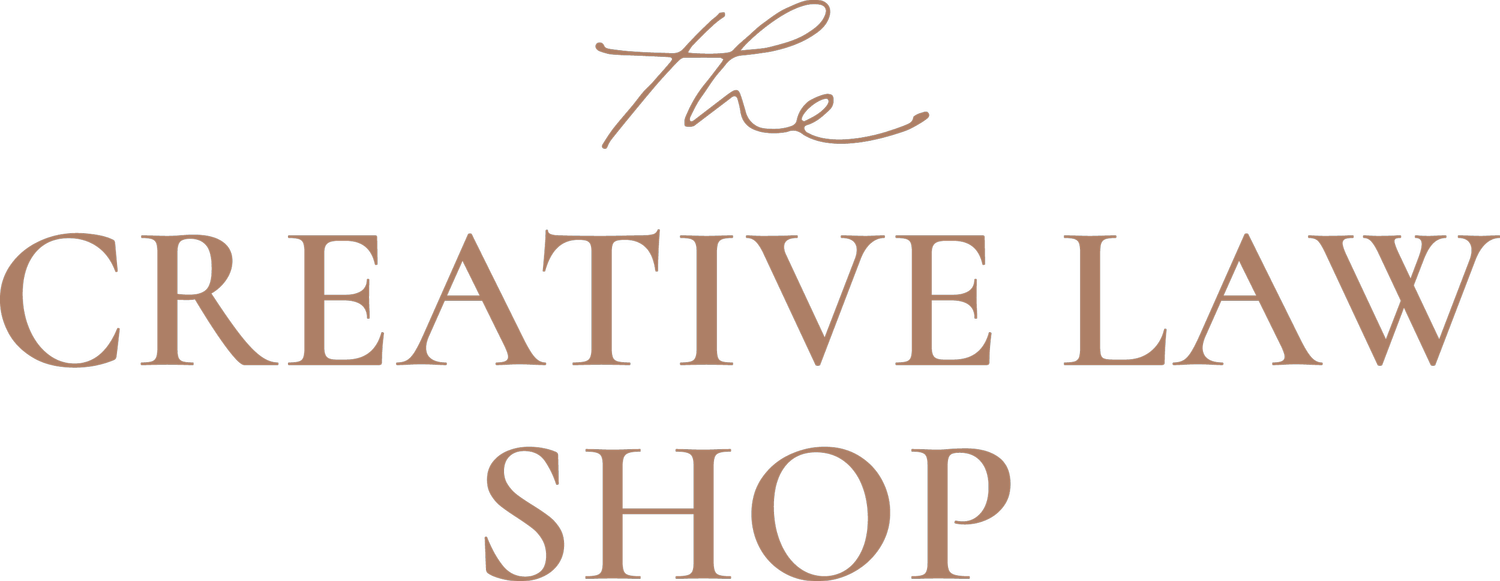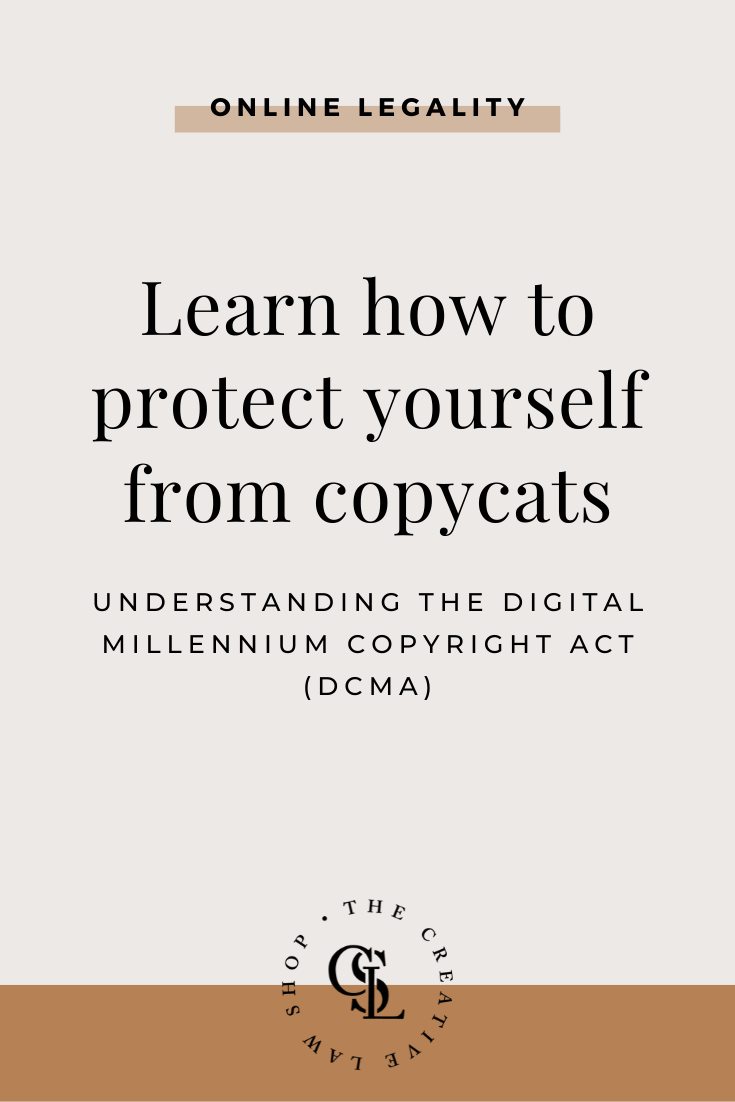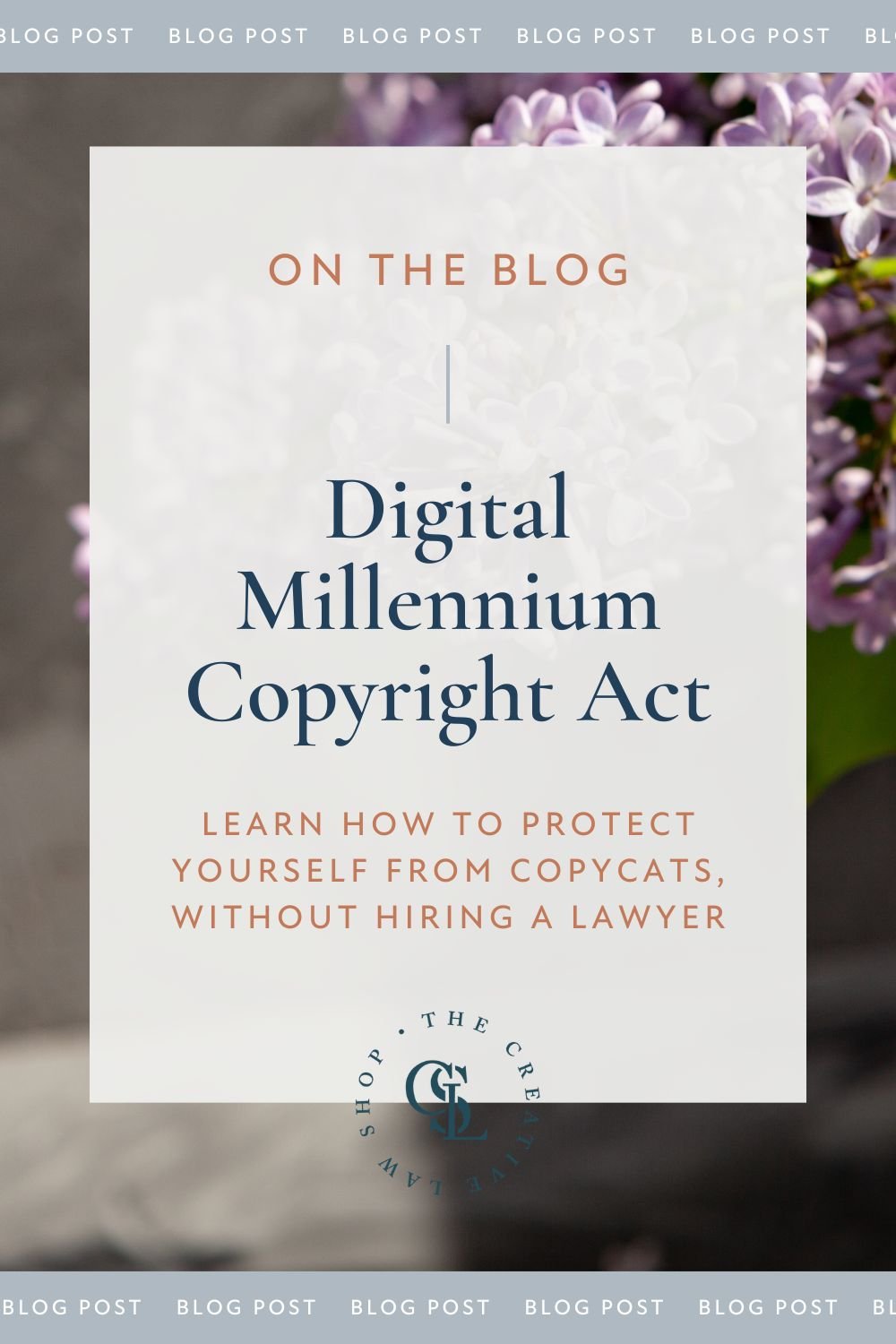Digital Millennium Copyright Act
Learn how to protect yourself from copycats, without hiring a lawyer.
You’ve been using online platforms (Etsy, Pinterest, even Instagram) to market your work online for some time now, and your marketing is really picking up steam- more and more people are starting to find your products, and people really seem to be taking notice of your business.
And in fact, they are. You pride yourself on the quality of your marketing and photos of your products, and those same pictures have recently started showing up on a retail giant’s own Instagram feed. They aren’t necessarily pretending to sell your product, but they’re definitely using it to promote the aesthetic of their own feed. At first, you’re flattered...but after a few instances, you grow frustrated. They aren’t even crediting you, and they never even asked if they could use the photos. That’s not right, is it?
No, it is definitively not. What that brand is doing is committing copyright infringement against your work. Today I want to walk you through the exact steps you’ll need to take to stop their action, legally, through what’s called a DMCA takedown request.
Note: while the DMCA is sometimes used for both trademark and copyright infringement, it was designed as a tool for copyright infringement, specifically. There is some debate on the correctness of using the DMCA for trademark infringement cases, but today I will focus specifically on what the statute was designed for: copyright infringement. Also, while the DMCA is applicable to all sorts of online platforms, such as Facebook, YouTube, Google, Pinterest, and Etsy, for the sake of today’s example, I will just discuss Instagram.
What is a DMCA takedown request?
DMCA stands for Digital Millennium Copyright Act. DMCA laws are pretty new, as far as laws go, and were something created in response to the huge influx of online services/ platforms that have arisen in the last decade. DMCA laws fall under U.S. Copyright laws. The DMCA provides online platforms such as Google, YouTube, etc. with a way to protect themselves from potential copyright infringement posted on their site. Platforms such as Instagram are predicated upon users sharing their own information- not necessarily Instagram’s information, right? Instagram doesn’t own the photos or goods showcased on users’ feeds. The DMCA gives that platform recourse if something is posted on their site that constitutes copyright infringement. Because of the DMCA, as long as Instagram follows certain procedures, you cannot sue Instagram itself for copyright infringement committed by another Instagram user. So, from my earlier example, if you decided to take legal action to stop that user from posting photos of your products, you wouldn’t be able to sue Instagram. Instead, you’d have to follow their procedure for stopping that infringer. Assuming Instagram is following DMCA rules, they are protected from potential liability from users’ use. Note: A DMCA takedown does not require the content to be copyrighted. That means a website owner or OSP can still be required to remove stolen content from their site, even if you cannot provide copyright ownership.
A DMCA Takedown is: A DMCA takedown is how infringed content is removed from a website by the owner of that content. It is a widely-accepted process that helps protect and defend content owners against copyright infringement and entities that violate copyright laws.
There are four different scenarios in which a DMCA takedown occurs:
A website owner takes down any copyright-infringing content themselves after receiving a DMCA takedown notice from their ISP or Hosting company. The notice is posted by or on behalf of the owner of the infringed content.
A website owner takes down any copyright-infringing material after receiving a DMCA takedown notice from the owner of that content.
Sometimes, the ISP or Hosting company will take down infringing content from the website that is posting the stolen content because the website owner has not complied with a DMCA takedown notice.
Websites are sometimes taken offline completely by the ISP or Hosting company because the owner of the website has posted stolen content and refused to follow DMCA takedown protocol.
The Process
So, if, from my earlier example, you have sent the infringing company a polite message asking them to take down the content, and they ignore you or refuse to comply, your next option will be to force them to shut down their action via the DMCA.
You can either send notice via a DMCA form or send a letter that complies with certain DMCA rules (it’s basically an amped-up cease and desist letter with statutory support behind it). If you go to Instagram (or any online platform’s terms of use), the steps for following their DMCA procedure will be outlined with specificity. Here is what Instagram tells you about sending a DMCA notice: If you believe your copyright is being infringed, the fastest and easiest way to report that to us is to use our online form. You do not need an Instagram account to fill out this form. Alternatively, you can choose to use traditional (and slower) methods, such as mail, to contact our designated agent. In that case, you will need to make sure you send us a complete copyright claim in your report.
Assuming that you have followed Instagram’s steps for filing a DMCA takedown notice, Instagram will then ask you for the registration number for your copyrighted product. It’s not absolutely necessary that you have a registered copyright for the product you’re trying to protect; however, it may affect the action that Instagram takes to shut down the infringer.
Next, Instagram will send that infringer notice of your allegation. The platform is required to shut down the infringer’s allegedly infringing material until they respond.
The next step will be to wait for the recipient to file what’s referred to as a “counter-notice”. A counter-notice is that person’s opportunity to respond, and this is where they would say that they are not committing copyright infringement if they were going to. As the copyright holder, you now have 10 business days to file a lawsuit. If you decide at this point not to sue that infringer, then Instagram has technically done everything they are obligated to do up to this point. They are well within their rights to allow the infringer to keep the posts up, or they may shut those posts or even that account down. If Instagram believes that the counter notice was insufficient, they may keep the material down indefinitely.
It's also important to note that in all dealings with DMCA notices, whether your takedown request or the infringer’s response, you are swearing an oath under penalty of perjury that your claims are the truth, the whole truth, and nothing but the truth so help you God. Untrue statements made under oath could be litigated under perjury claims later.
How you can use the DMCA process to protect your business
Clearly, the DMCA takedown process offers readily accessible protection for your business. And technically, you don’t actually need a lawyer to help you implement it. However, it's important to note that many times when you send a DMCA takedown notice, the alleged infringer may actually send you back a counter-notice. Then, of course, it's probably best to speak with an attorney, because you don’t want to be caught unprepared or mishandle your response. Your response in this scenario will be absolutely critical; after all, that party would have ten business days to file suit against you. Have you seen your copyrighted work used impermissibly on a third-party platform such as Instagram or Etsy? Take the time to familiarize yourself with that platform’s terms of use- they will give you detailed, specific steps on the steps to take. And heavily consider the DMCA takedown procedure- it can truly be an asset for your business.




